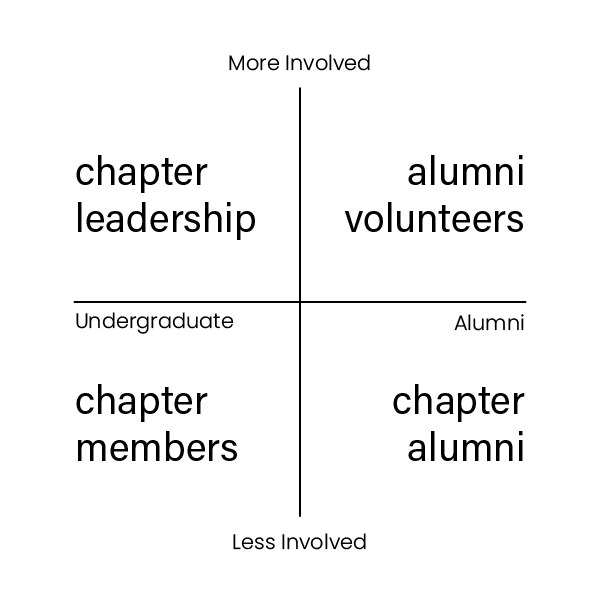Nobody saw it coming: 2020 ushered in a new decade, which was quickly interrupted by the COVID-19 pandemic.
As an organization rooted in college social life, the Alpha Epsilon Pi fraternity was hit hard.
We needed a new way to connect.
Nobody saw it coming: 2020 ushered in a new decade, which was quickly interrupted by the COVID-19 pandemic.
As an organization rooted in college social life, the Alpha Epsilon Pi fraternity was hit hard.
We needed a new way to connect.
Alpha Epsilon Pi is a social college fraternity. With colleges closing around the world during the unprecedented COVID-19 global health crisis, membership, and engagement were severely impacted.
I immediately started to work on building and launching an online, interactive platform to increase engagement.
AEPiConnect was a project I completed while working as an in-house communication and graphic design professional for Alpha Epsilon Pi (AEPi), a historically Jewish social fraternity for men, with more than 170 chapters around the world.
Like most college fraternities, AEPi sells an on-campus social experience to its members. The initial lockdowns and university closures of the COVID-19 pandemic impacted the operations of every single chapter of AEPi. The initial six-week period of membership is critical to new member retention, and new members were losing touch with their local chapters and the international organization. This raised serious concerns among staff and the board of directors.
With no time or additional resources to spare, the goal was to create a web page that would serve as a one-stop virtual experience to bolster online engagement.
My role in this project was site mapping, front-end web development, branding, and graphic design.
In the wake of lockdown orders and university closures, Alpha Epsilon Pi was losing its position as an on-campus social experience for Jewish, college-aged men.
With an uncertain fiscal year ahead, there were very limited financial resources available for this project.
At the time, this type of interactive platform didn’t exsit in the fraternity industry. This meant we had to start from scratch.
In addition, since the pandemic was affecting chapter operations and membership at an alarming rate, the timeline from inception to launch had to be under a month.
The first step was identifying and segmenting the main target audiences for the project:

AEPi’s market was broken into four distinct segments, based on their status as a graduate or undergraduate member and involvement level within the fraternity. While the undergraduate segments are practically all males aged 18 to 22, alumni members are post-college males aged 22 to 99+. Naturally, alumni have a wider variance in their interests, life paths, etc.
After segmenting our audiences, we organized discussions to decide what programming to offer each of the four key segments. We then began creating content for the project, including educational resources, webinars for undergraduate and alumni members, job or internship opportunities offered by community partners, entertainment, and virtual social activities like video game tournaments.
Looking back, strategizing would have been easier if we had budgeted time for specific market research for each of our key demographics. While the information we had available was still generally relevant, it was not specific to this project.
While we were constrained by time and budget due to unprecedented circumstances, the process could have been streamlined by data-driven decisions.
Once our goals and strategy were in place, branding and web design began.
The visual approach emphasized the colors and typefaces that were an existing part of AEPI’s brand. Using blue as a background color allowed a departure from the white screens our members were looking at all day on Zoom calls and in online classes.
In the first two weeks following the launch, AEPiConnect accounted for 20% of all traffic on AEPi’s website. It was the second-most visited page on the site for the quarter, accounting for 10% of all traffic. AEPiConnect had a below-average dropoff rate of 65%, as opposed to a 74% dropoff rate for the site.
My ongoing role was managing the new site as more resources were being developed. Each department within AEPi would track users’ responses to their specific content, and AEPi’s Assistant Director of Communication handled promotion and outreach via social media and email.
The programming, network opportunities, and social features of AEPiConnect lead to increased member retention rates in the following lockdown semesters. After the lockdowns ended and students returned to their campuses, AEPiConnect was adapted into the AEPi Business & Professional Network.